Georgia Gardener Newsletter Design Tip: July 27, 2006
Planting a Berry Garden
There are many plants that in addition to having beautiful flowers or striking foliage will
also produce showy berries or fruit that can be edible by humans and enjoyed by wildlife.
There are also attractive berries and fruit that should not be eaten by humans, but
are best left for birds and other creatures.
Native versus Non-Native Plants
At a recent conference I attended, many botanists were quick to point out that any plant
with a showy fruit or berry has the potential to be spread by wildlife. Because some of our
worst invasive non-native plants are spread in this manner, it's best to stick with native plants
when planting a berry garden. Therefore all of the plants pictured or recommended are native to
Georgia.
Berries for People (and Wildlife)
We have a wonderful selection of native plants that produce edible berries or fruits that
are available from nurseries, especially
nurseries that specialize in native plants.
Serviceberry (Amelanchier spp.): There are several species native to Georgia and one
cultivar that is sold in nurseries (Autumn Brilliance Serviceberry). Autumn Brilliance Serviceberry
is a small tree (25 x 20) that blooms with showy white flowers in early spring and is followed by
a berry that changes from red to dark blue when ripe. It's sweeter than blueberries, in my opinion.
Sumac (Rhus spp.): All of the red-berried sumacs have edible fruit, although if you have
an allergy to cashews or pistachios, don't eat sumac berries. Poison sumac (Toxicodendron
vernix) has white berries and is typically found in wetland or bog areas.
Red sumac berries are tasty, but often tart. They can be made into a tea and sweetened with sugar.
Red-berried sumacs have fantastic bright orange/red fall color. Alas, nurseries haven't caught on to
this plant. You may have to order one via email or dig one from the roadside with the property owner's
permission.
Blueberry (Vaccinium spp.): Blueberries grow wild all over Georgia from the coast to the mountains.
Commonly sold varieties are either classified as Rabbiteye or Northern Highbush.
Muscadine/Scuppernong (Vitis rotundifolia): This rampant vine is commonly found at the edges
of woods. From looking at the leaves and fruit, it's easy to see that it is in the grape family.
Cultivated varieties bred to produce abundant fruit are sold by nurseries.
Other edible berries (fruits) not pictured: Blackberry, Hawthorn, Elderberry, Paw paw,
Persimmon and American Plum.
Never eat any wild fruit or berry unless you are ABSOLUTELY sure of its identification.

|
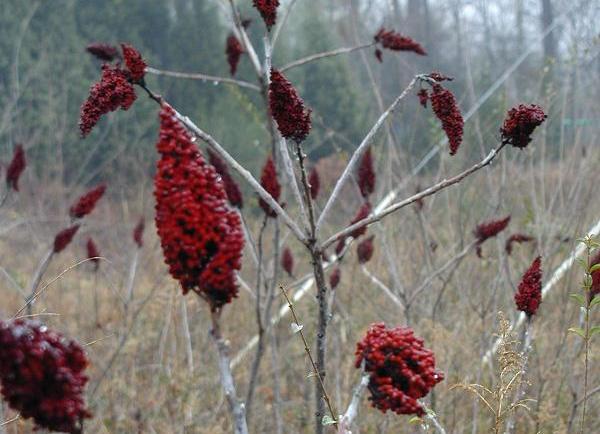
|
| Serviceberry | Sumac |
| |
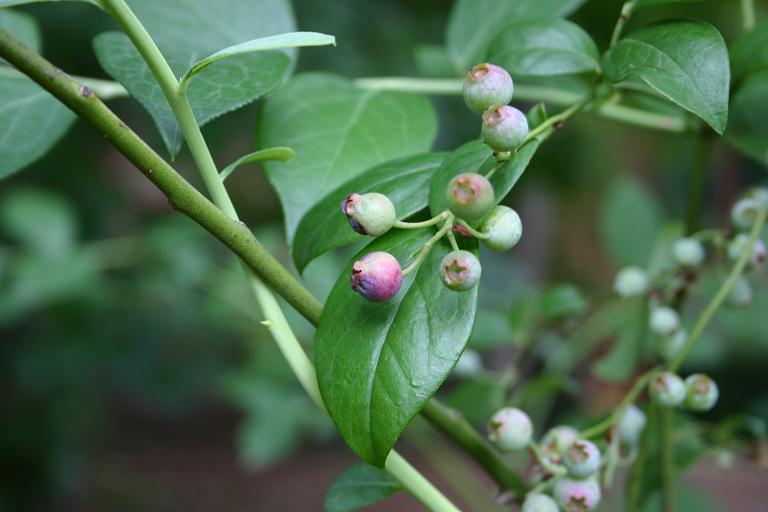
|
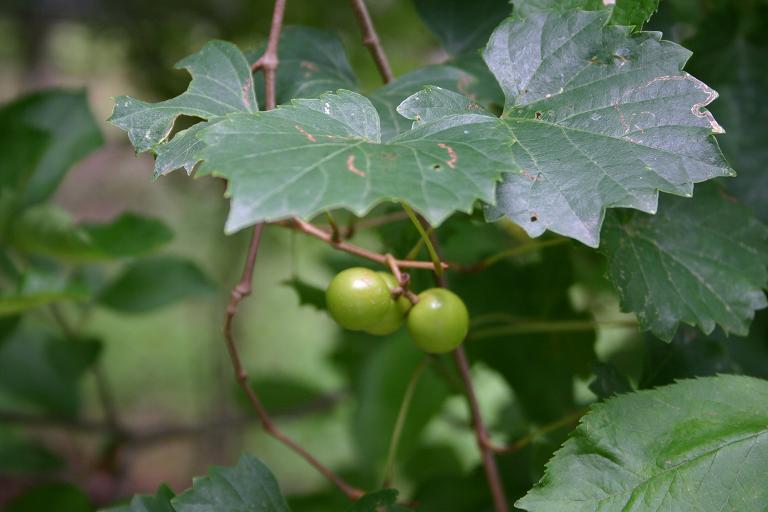
|
| Blueberry | Muscadine/Scuppernong |
Berries for Wildlife (not People)
Other native berries and fruit abound, but these are best left to wildlife. You should be
able to purchase most of these from local nurseries or
nurseries that specialize in native plants.
Beautyberry (Callicarpa americana): Lush purple berries are clustered tightly around the base
of the leaves which drop in fall leaving the berries visible. A white-berried variety is also available.
Note: Buy only the American species
not the Asiatic species (dichotoma, bodinieri, etc.) which have smaller berries
at the end of a short stem that bends away from the leaves.
Dogwood (Cornus spp.):
The common Florida dogwood is covered with bright red berries in the fall.
Another less common dogwood, the pagoda dogwood
(Cornus alternifolia)
bears dark blue berries, also in the fall. Both trees are loved by many species of birds.
Winterberry (Ilex verticillata):
This is one of our native deciduous hollies and the female plants are well-known for their bright
red berries from the fall through the winter. Birds feast on the berries usually after the first
hard frost. This plant loves wet soil. You must have a male plant nearby for berry production.
Hearts-a-bustin (Euonymus americanus):
This native relative to the common burning bush is often found as an open woodland shrub with
green stems and opposite leaves. It's not much to look at until fall when the spiny pink seed pods
burst open to reveal orange berries that are highly visible in the woods. To me, this is Mother Nature's
only color combination faux pas.
Catbrier, aka Greenbrier (Smilax spp.):
This thorny sometimes evergreen vine has many names, some with expletives. Although quite a few
species of catbrier aren't worth having, there are two that are quite lovely and one that has much
fewer thorns. Both lance-leaf greenbrier (S. smallii) and laurel-leaf greenbrier
(S. laurifolia) have very attractive evergreen leaves. All species of catbrier produce
berries that are attractive to birds and other wildlife.
Virginia Creeper (Parthenocissus quinquefolia): This wonderful, often rampant vine
is sometimes mistaken for
poison ivy (even by my mother who brought me a leaf sample in a plastic bag).
Virginia creeper has five leaves and not the three of poison ivy. Virginia creeper produces white berries that
are highly desired by birds. In sun, the vine has the most intense red fall color.
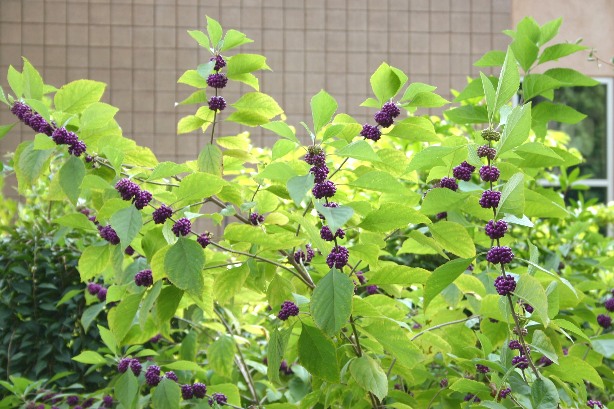
|
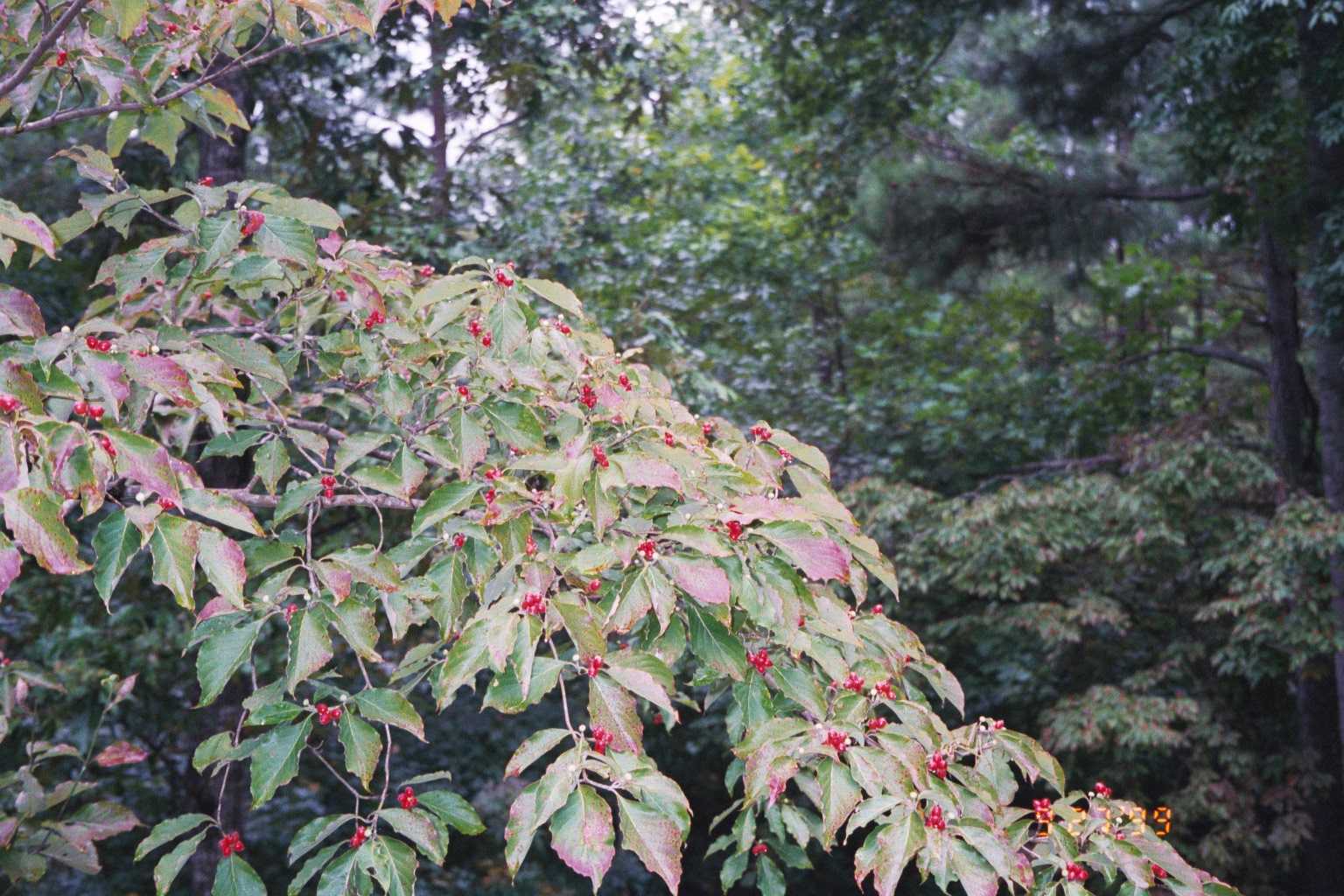
|
| Beautyberry | Dogwood |
|
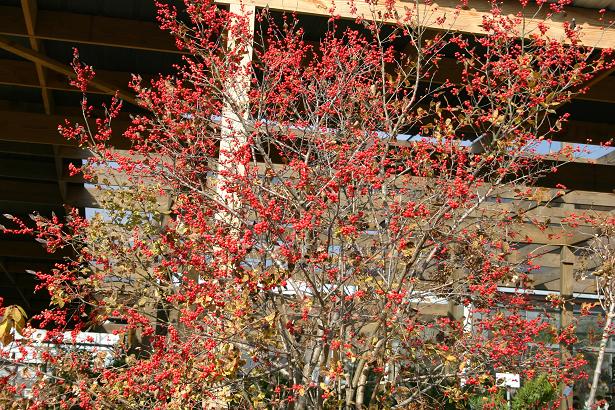
|
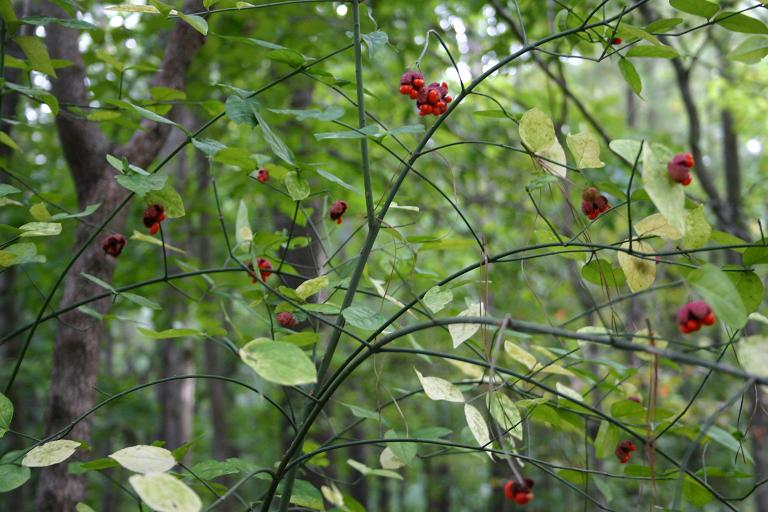
|
| Winterberry | Hearts-a-bustin |
|
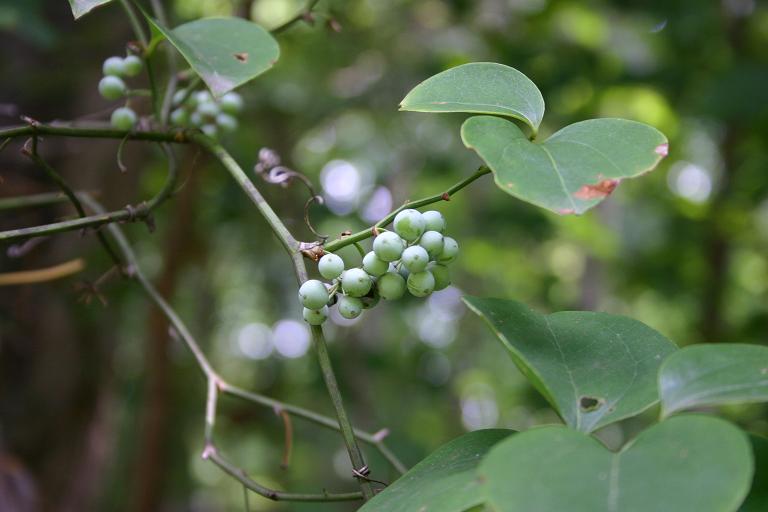
|
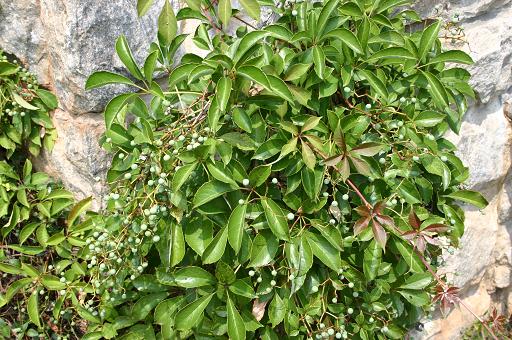
|
| Catbrier | Virginia Creeper |
Berry, Berry Bad Plants
There are non-native landscape plants with attractive fruit or berries that have become real pests
in Georgia by invading and disturbing natural areas. Some of the worst offenders include:
Chinese Privet (Ligustrum sinense)
Russian and Autumn Olive (Elaeagnus spp.)
Heavenly Bamboo (Nandina domestica)
Chinaberrytree (Melia azedarach)
Leatherleaf Mahonia (Mahonia bealei)
Source:
Georgia Exotic Pest Plant Council
Copyright © 2007 by Theresa Schrum - All rights reserved
No part of this website may be reproduced without the expressed written permission of Theresa Schrum













